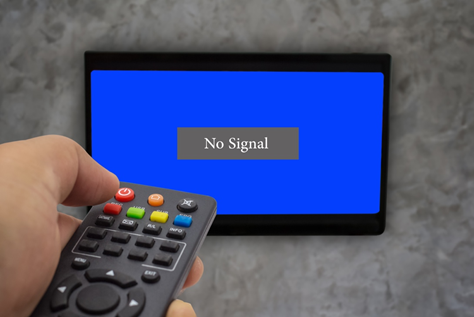Most organizations don’t think much about their audio visual systems until it is time to use them. When it is time for a presentation, we just expect everything to work. However, if we don’t invest in regular preventative maintenance, our system might not perform as expected. There is nothing more frustrating than keeping staff, clients, or guest waiting while we try to troubleshoot AV system operation.
All the complex systems in our lives require preventative maintenance. We could avoid oil-changes and tune-ups on our cars, and they would likely run for quite a while. However, one day, when we need our vehicle, it might not start.
Complex Audio Visual Systems Require Maintenance
When audio visual systems are functioning correctly, they appear to be relatively simple. However, what most people don’t see are the delicate electronic components that ensure that your video and audio look and sound their best. These electronics experience quite a bit of stress and, over time, can malfunction or fail. This is especially true of cables, connections, and ports that are continually being connected and disconnected. Some parts, such as wall plates and floor boxes face the additional stress of being stepped on or bumped over and over.
Without preventative maintenance, audio visual system issues catch us by surprise. When a problem hits, there is seldom time to get it resolved before it is too late.
With most systems, there are parts that we use regularly, and we might notice an issue right away. However, there are also functions and connections that we use infrequently. Often auxiliary connections or legacy equipment (DVD players, VGA connections, etc.) are only rarely used but are still expected to work when needed. Common problems are usually not visible to the naked eye, but can easily be discovered and remedied by a trained technician.
A Preventative Maintenance Visit
Northeast Digital Integrators was recently called out for a preventative maintenance visit. Our technician spent two and a half hours in four conference rooms to assess some nagging issues that the client had been dealing with. After a thorough review of the audiovisual system, the technician discovered three problems that were easily remedied. These issues were corrected quickly and easily. Only one part needed to be replaced, and it was a relatively inexpensive cable. Still, these issues would have caused significant headaches if these components were required for a presentation.
Here are some of the issues the technician found and what the technician did to rectify the problem.
Room 1 – No Signal from DVD Player
DVD players are a perfect example of components that are used less frequently but still need to work when necessary. In this room, the DVD player was not showing up as an input on the Digital Video Switcher. The technician suspected the HDMI cable running from the DVD player to the switcher was the problem. He replaced the cable and retested the unit. The problem was fixed.
Now, the next time someone needs to use a DVD as a part of a presentation, it will be ready to go.
Room 2 – A Loose Connection
There was no problem initially indicated in this room, but through testing, the technician noticed that there was a floor mounted HDMI connection that was not working. This input was only occasionally used for connecting a laptop. On further inspection, he realized that the connection was simply loose inside the floor box. He re-seated the cable and re-tested. The issue was solved. Not a single part was needed to get this part of the system working again.
Room 3 – A Loose Cable
The technician observed that the VGA connection was not receiving a signal from a laptop. Again, an inspection found a loose connection inside the floor box. The technician re-seated the cable and secured the connection. Again, the issue was quickly remedied.
Avoiding Larger Problems Down the Road
All of these issues were minor repairs but had the potential to cause significant problems during a presentation. Small items like these can also lead to more significant problems down the road, especially when users attempt to fix them on their own.
While technicians are inspecting and fixing minor problems, it is also possible that they might find other concerns that are not causing issues yet but will likely fail in the near future. It is much more convenient, and cost-effective to fix these now before they cause the system to fail.
Northeast Digital Integrators recommends regular, periodic preventative maintenance checks. This includes a thorough testing of all components and connections and a complete inspection of all cables and connections.
We Can Help
If you need assistance, we are glad to help. Contact us to schedule a visit from one of our trained and experienced technicians. They know precisely what to look for and have the knowledge and specialized equipment to thoroughly test, inspect, and diagnose issues. Whether they find a minor issue, like a loose cable, or a major system problem, we can fix it, help you develop a plan for repairs, or work with you to design a system upgrade or replacement.
Contact Northeast Digital Integrators today by email at support1@nedi-av.com or use our website’s live chat feature www.northeastdi.com
